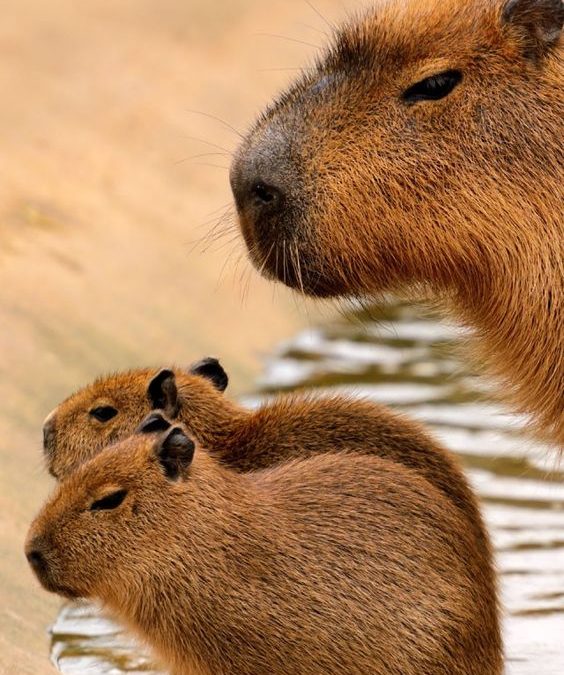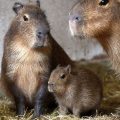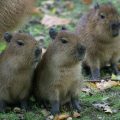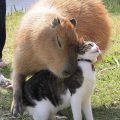In October of last year (2015), a baby capybara was born in Chester Zoo, UK. And at only two-weeks old, this tiny rodent can already walk, run and even swim on its own.
Baby capybara are the world’s largest rodents; they’re semi-aquatic mammals that came from South America. They can be as large as dogs as they can grow up to 1.5m in length and weigh around 60kg.
Their scientific name actually translates to ‘water hog’ and their bodies have adapted specifically for swimming, which is evident in webbed feet, while their eyes, nose and ears are all strategically placed on top of their heads so they can see, hear and breathe easily while their body is underwater. In the wild, they avoid predators such as anacondas, caiman, jaguars, etc., by staying submerged in water.
Assistant Curator for the Animals of Chester Zoo, Dr. Nick Davis shared his thoughts about the new addition in their zoo.
The young capybara is still so tiny; it can barely be seen above grass when it walks around. It weighs just a few hundred grams, but it will grow to a hefty rodent in time. Dr. Davis said.
While capybaras are not listed as endangered species, they’re being hunted and poached for their meat and skin (for leather). “So it’s important that our new arrival helps us raise the profile of this often overlooked species.” he added.
Capybara Facts
Though capybaras look like beavers, they’re actually rodents, and the largest rodent there is in the world today. They are endemic in Central and South America, and they live near the water sources, such as lakes and rivers, swampy areas and ponds. A few years ago, their numbers have dropped due to uncontrolled hunting. Today however, their numbers in the wild have recovered, thanks to farming.
- Female capybaras are larger than their male counterparts.
- Their barrel-shaped bodies are covered with wiry fur, usually brown in color.
- As with many rodents, they’re herbivores (plant eaters), and they graze grass and love aquatic plants, usually at night. They also eat soft tree barks and fruits such as apples.
- A fully-grown capybara can consume up to 8 lbs. of grass a day.
- Like cows, they also regurgitate their food and chew it many times.
- They eat their feces, which aides in their digestion of food.
- In the wild, they live with the herd, and they alert their members of the group by producing a warning bark. They can purr, grunt and squeal.
- They can communicate through scent: male capybaras release a certain substance to mark their territory. Females on the other hand, release a certain smell to inform males when they’re ready to mate.
- They’re highly adaptable to aquatic lifestyle; they are excellent swimmers and divers, they even mate in water sometimes.
- A herd of capybaras usually range from 10 to 30 members. This can balloon into 100 members during dry season.
- Though baby capybaras drink milk from their mother (up to 16 weeks), they can eat grass a few days after they’re born.
- Baby capybaras are well-developed; they can walk, run and swim after a few days of their birth.
- In the wild, capybaras can live up to 10 years, and 12 years in captivity.






 Author and long-time animal lover. Sharing knowledge on pet care through experience and the written word.
Author and long-time animal lover. Sharing knowledge on pet care through experience and the written word.